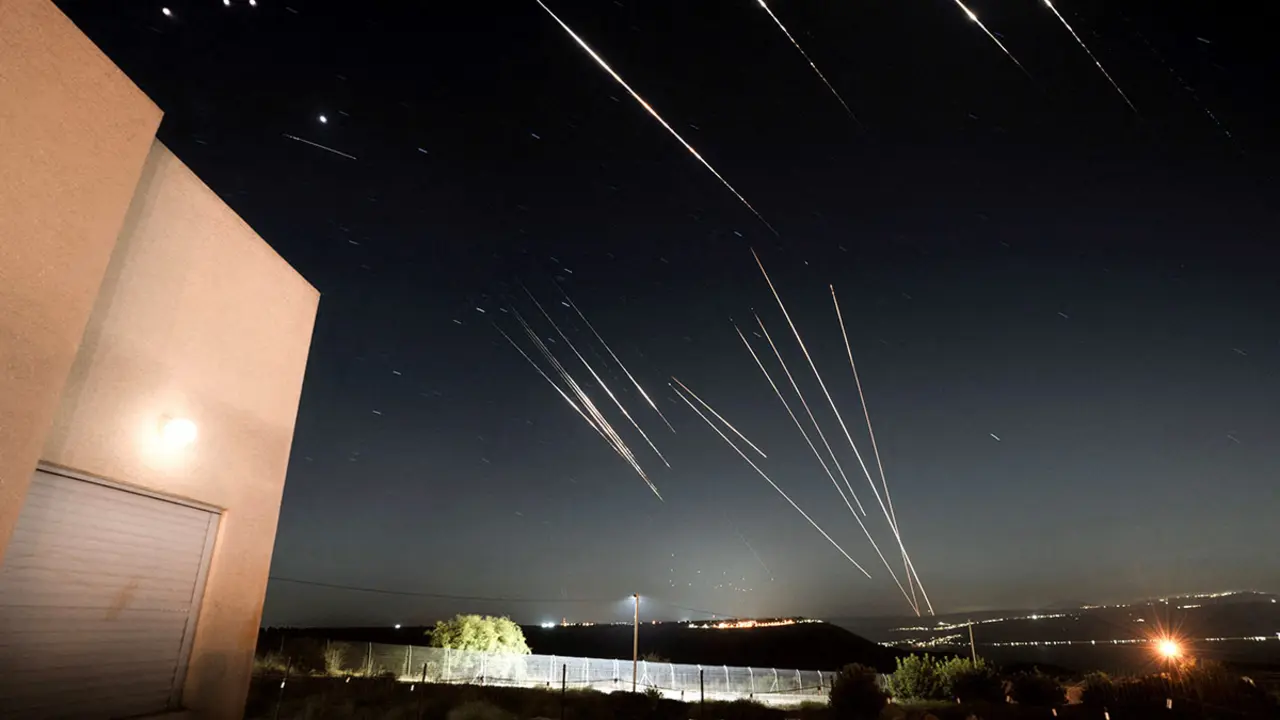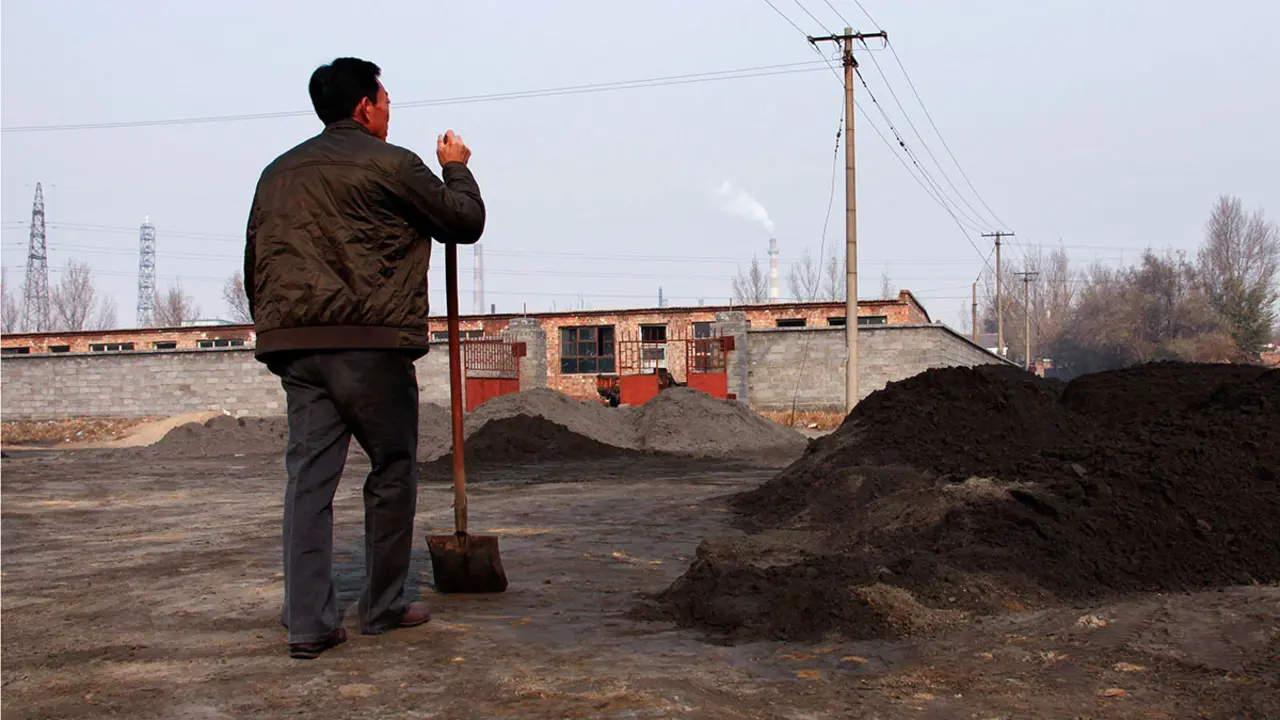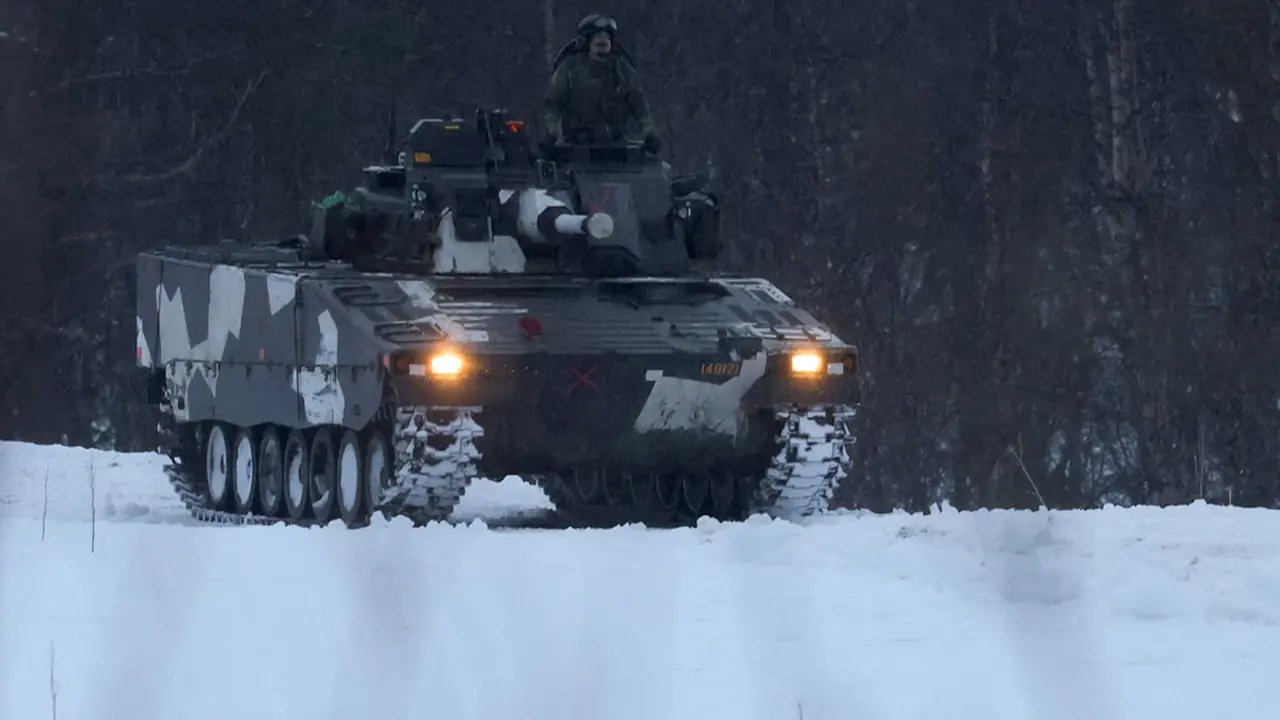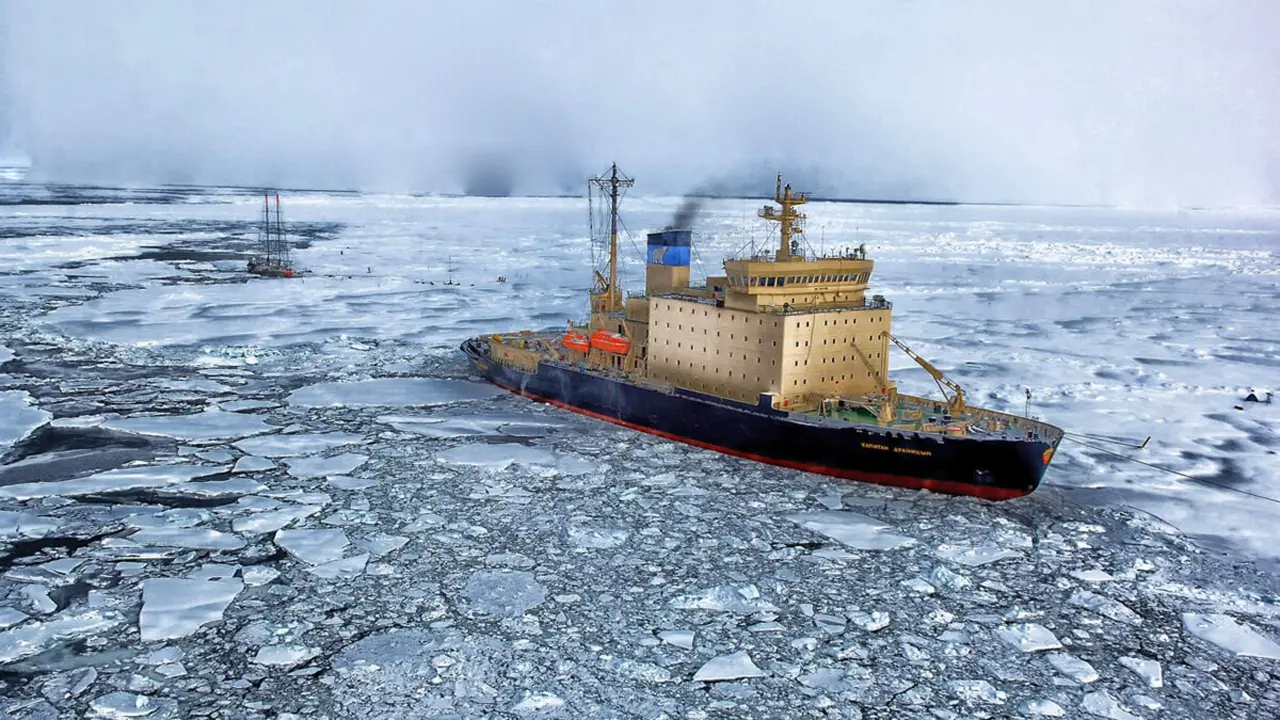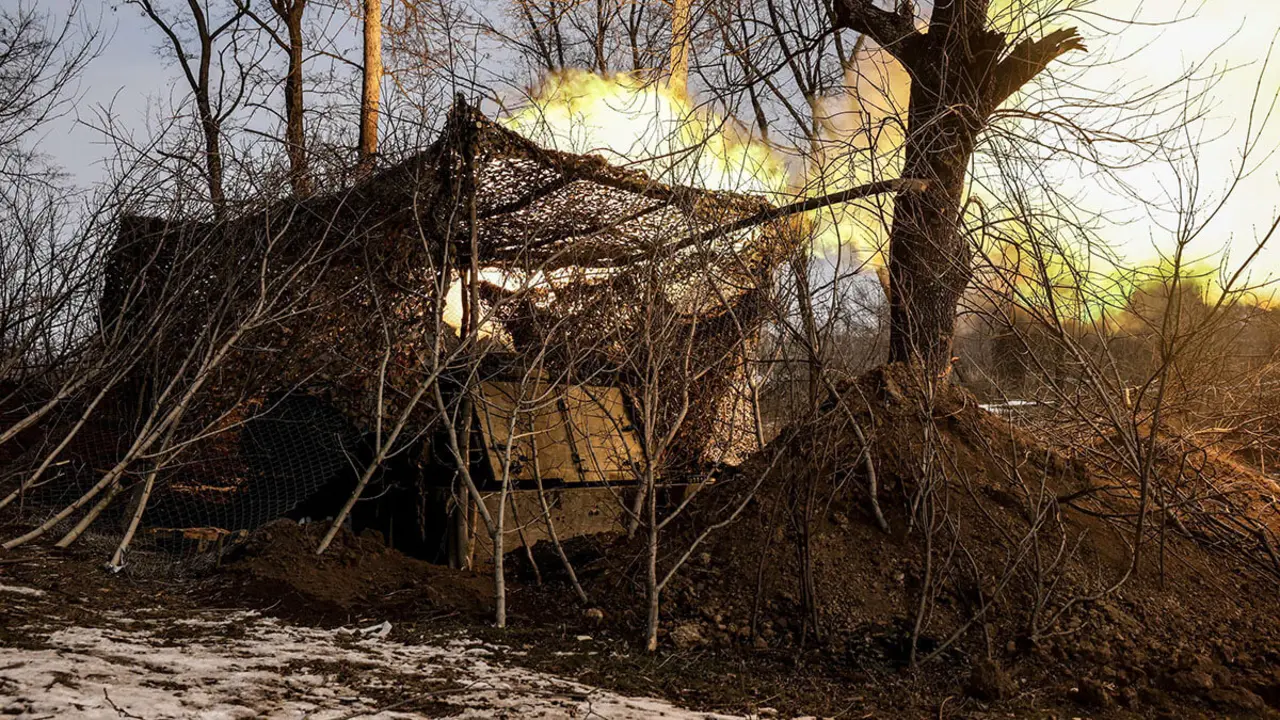Walking with death: this is the work of sappers clearing mines in Ukraine

Russian troops have mined 30% of Ukraine.
Maxim walks slowly while carrying a cluster bomb in his left hand. He has just picked it up from the garden of one of the Ukrainian families who call 101 after an attack, when the shells launched by Russian forces - luckily - do not explode. Then a bomb disposal team goes to remove them.
There are no robots, no fancy suits, like the ones in the movies when they have to defuse a bomb. Maxim wears only his bulletproof vest and helmet - which would be of little use if the device exploded - as he places the lethal cylinder in one of his team's vans.
So begins the day for the explosive ordnance disposal specialists of the Ukrainian Emergency Service. They work six days a week, from Monday to Saturday. They start with a solemn oath to give their all for their homeland before they leave the barracks and make sure that, wherever they go first, the rest of the people will not be blown up.
"My son is two years old and I don't think this will be over by the time he's old enough to understand," Maxim admits bitterly. He is the leader of the team of sappers I accompanied on a demining day in northern Kharkiv, and at 27 he has a task ahead of him that could take a decade: demining Ukraine.

Russian troops have mined 30% of the country - all the territories they once occupied - more than 174,000 square kilometres. For the moment, only the liberated regions, where there is no longer active fighting, can be cleared. But the clearance work is titanic.
In the province of Kharkiv alone - Ukraine's most heavily mined province - more than 500 sappers are working flat out. In addition to clearing the landmines planted by the Russians, they have to neutralise the remnants of the air strikes that continue unabated on this front. Like the cluster bomb they have just stored in their car.
The trickle of people and vehicles stepping on a mine in this region is constant. The most exposed are farmers, electrical workers repairing power lines bombed by Russia, or civilians out for a walk in the countryside - something that has become a risky sport in eastern Ukraine since the invasion began.
Today the aim is precisely to clear the route of the electricity cables that public workers will be repairing over the next few days. "The electricians have learned to wait for us, they have learned that they won't work any faster without us, and that when they don't wait for us, tragedy happens," Maxim says as we go to pick up the head of these workers, Igor.

The chief electrician will show the sappers where to work. He is an experienced guy who, despite his age, walks briskly - with a notebook in one hand and a map of the power lines in the other - noting down all the damage he finds.
Maxim, Alexander and Sergei are always ahead of him, combing the terrain. They are meticulous: an initial visual inspection, then a sweep with magnetic waves over every inch of ground. If the metal detector goes off, they use a needle to make punctures in the earth to check if there are any metallic objects.
During the tour we found a lot of unexploded ammunition. From mortar shells to smaller ammunition. Sometimes it is difficult to detect them in the rubble, as most of the villages in the north of Kharkiv are razed to the ground by Russian artillery.
In places like Prudyanka and Slatino, only the skeleton of most of the houses is left, and the inside may also be mined, as the sappers warn me, advising me not to walk on my own but to follow the path they are marking.

Stopped in front of an electric pole, while Igor takes note of the damage at the entrance to a village, a woman approaches us from the road. She has recognised the deminers: "Please, please clear the cemetery. It is mined, and we are afraid; we cannot go to visit our dead, please," she pleads again and again. The scene is heartbreaking.
In addition to the presence of mines that has the neighbours in despair, the huge number of electricity cables - now severed by shelling and lying in the Ukrainian mud - are a challenge for public workers. "There are 15 of us in the Dergachi region, but we can repair up to 10 kilometres of power lines a day," says Igor, boasting of the exceptional work they do.
The army of electrical workers fighting Putin's bombs in Kharkiv has more than proved its worth, especially during the wave of attacks on power plants that hit Ukraine last autumn. Back then, within minutes of hearing the explosions, you could see them on the streets of the city every time there was an attack.
In the cranes of their trucks, they climbed up to the top of the lines to bring light back to the people of Karkov. Unlike other Ukrainian cities, and despite the fact that shelling was more frequent here, there was only one 24-hour blackout, and power cuts were far less common than in Odessa or Kiev.
Today their work outside the city requires the help of explosives specialists, because several incidents have already been recorded in areas that had not been previously monitored. So now, they have joined forces.

The sappers are divided into groups of six people to work, and each group carries two vehicles in which they load their equipment: metal detectors, material for controlled blasting in case the ammunition is not stable and cannot be handled, tools for digging up the mines they find.
In addition to clearing villages and open fields, and ensuring the work of the electrical operators, they have to respond to warnings from the public. And they cannot cope with the number of calls reporting that there is an unexploded shell in their garden - or embedded in their house.
Sometimes, in the most remote villages, they have to wait several days for a team, such as Maxim's, to come and remove them. And it is in these warnings that they find the evidence of the Kremlin army's war crimes.
Russian forces continue to use phosphorous and cluster munitions against the civilian population on a systematic basis. "Of these alone, my team and I have removed more than 500," says Maxim, referring to the cluster bomb he picked up with his hands a few hours earlier.

Anti-personnel mines are also banned by the Ottawa Protocol, but in the war in Ukraine they are used at will. Another stop before the end of the tour is the scene of a terrible accident caused by a landmine: a car drove over the place where it was buried, blowing it up when it was detonated.
The event had taken place the day before, and the passengers in the vehicle had died. The explosives specialists now have to check the entire surrounding area. "There is a good chance that there are more mines," warns one member of the team, as they examine the debris from the explosion.
Since the beginning of the Russian invasion, Ukrainian sappers have cleared more than 345,000 explosive devices, and more than 2,200 aerial bombs. To date, they have cleared 82,000 square kilometres - less than half of the territory that is mined.
The Civil Protection department is keen to count every metre of land they clear, but they do not hide the fact that it does not come for free: in Kharkiv alone five sappers have died while doing their job, and another five have been seriously injured in the past few months. "Most often you get your fingers cut off or a limb amputated," they explain.

The most significant loss was the day the five died, all at the same time, in a chain explosion. "It was a series of devices that the Russian troops had rigged: when the first one exploded, the rest blew up simultaneously; they didn't stand a chance," recalls Maxim, holding his breath.
It takes five years of training to become a bomb disposal specialist in Ukraine. Before the war, these specialists were mostly engaged in removing the remains of World War II bombs, which still littered the country. Now the work has increased a thousandfold.
"Why did you decide to do this," I ask Maxim at the end of the day, before saying goodbye to him. "Someone has to do it," he replies seriously. "Aren't you afraid," I say. "You never lose your fear," he replies.

